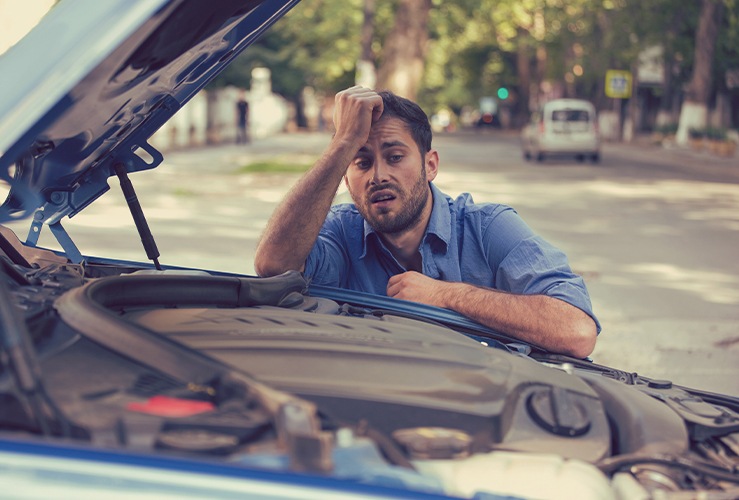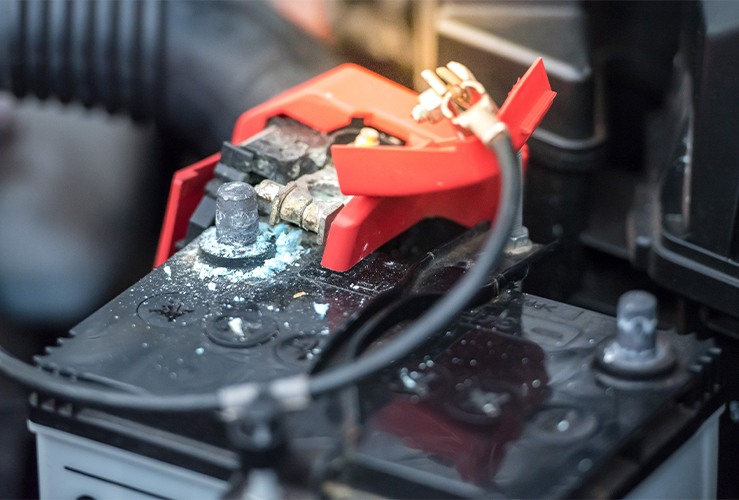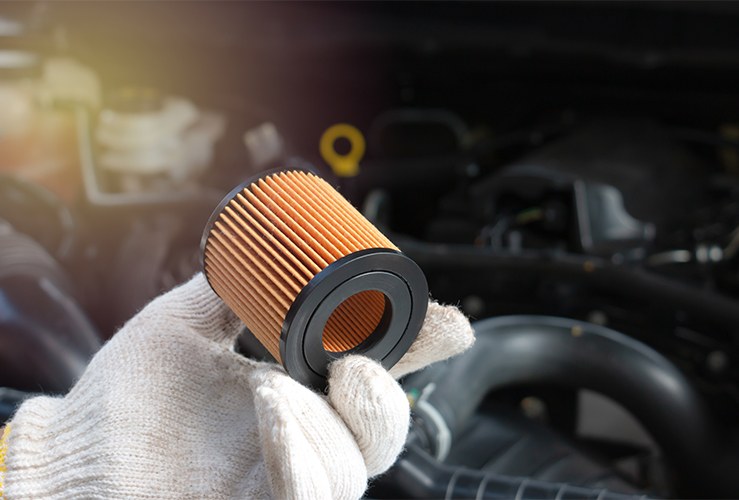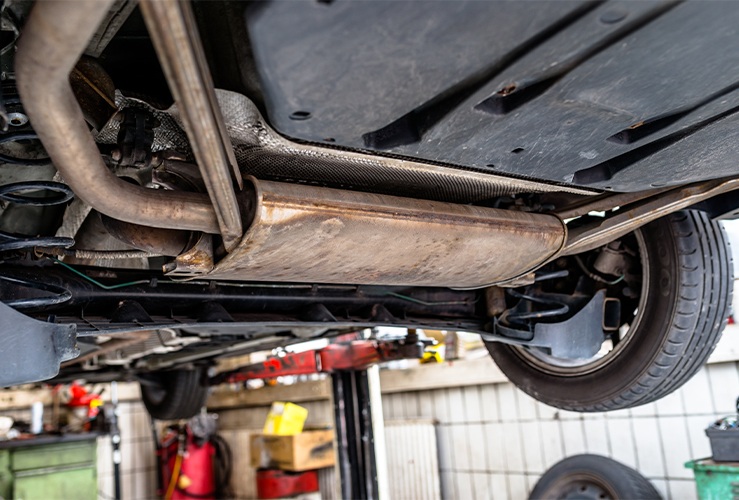Stalled engines are fairly common, but can be straightforward to fix.
Your engine stalls when it loses either air, fuel, or electricity while running. Here we'll run through some of the more common fixes.
Only attempt a DIY solution if you have sufficient knowledge and experience. If you are unsure, visit your garage for assistance.

1. Electric fault repairs

Battery connections
Consistent power demands clean battery connections. If they get grimy, your engine may not receive the power it needs.
Clean the terminals and see if this helps.
Spark plugs
Old or worn out spark plugs could be another culprit. They ignite the air-fuel mixture at precise intervals and if faulty can become miss-timed, causing the engine to stall.
2. Fuel system check

Fuel filters are normally located on the fuel line that runs from the engine to the fuel tank. When this cylindrical unit gets clogged, it can cause your engine to stall.
You might decide to replace the fuel filter yourself. However, you should be extremely careful as you will be working with petrol.
Take off the plastic clips and unscrew the holding bracket. Then attach a new filter by connecting it to the fuel lines and placing it into the bracket. Collect any leaking fuel by placing a container underneath.
Cracked fuel line
If your fuel line gets damaged, fuel may be leaking out before it reaches the engine - which can cause your engine to stall.
You should not drive a vehicle with a damaged fuel line. But you can replace the fuel line yourself with relative ease - by disconnecting it from the hose clamps and attaching a new one.
Of course, most drivers will simply take their car to the garage to have this job completed.
Check the fuel pump
If the fuel filter and line look good, then there could be an issue with your fuel pump. It's possible the fuse has blown.
If replacing the fuse doesn’t work, you can test the fuel pressure by attaching a special gauge to the engine’s fuel rail. Get someone else to rev the engine and check the pressure read out on the gauge. If the revs do not match the manufacturer's recommended level (see your manual) it's likely you’ll need to replace the fuel pump. If the pressure is OK, the stalling is caused by something else.
Water in the tank
Another possibility is water in your fuel tank - sometimes caused by condensation build up after a car has been standing for a long time.
For small amounts of water, you can use a special alcohol drier. For larger quantities, you'll need to drain the tank.
3. Issues with air and exhaust

Most problems with air and exhaust systems can be diagnosed with a code scanner.
First, find the OBDII port under the dash then connect a scanner and read the codes. Your owner's manual will tell you what each error code means.
Mass air flow sensor issues
This device controls how much air reaches your engine (fuel-injected only). If it gets clogged or malfunctions, it could cause your engine to stall.
The mass air flow sensor is usually found next to the air filter. If you see any damage or clogging, you can order a new one from your manufacturer, and replace it.
Oxygen sensor damage
The oxygen sensor ensures your engine has the right air/fuel ratio. If it goes wrong, it can cause stalling - and will need to be replaced. In some cases, however, you might be able to simply clean the old one and reinstall it.
The oxygen sensor is easy to identify because it's the only component with wires.
Catalytic converter
Your catalytic converter filters out harmful elements before they escape out of the exhaust. If this becomes clogged, your engine will have to work harder, potentially resulting in stalling. A clogged catalytic converter may be identified with a special OBD II fault error.
Unless you have a good level of applicable know-how and experience, you may want to have this done by a professional.
For further advice, check our our 'Why Is My Car Stalling?' blog post, here.




